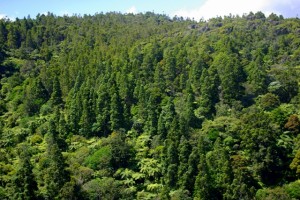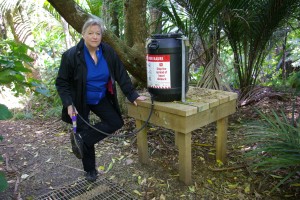Kauri dieback or phytophthora taxon agathis is an organism that infects New Zealand’s iconic kauri, causing bleeding lesions on the trunk, collar-rot and gradually loss of foliage and death. The organism can be spread by soil, water or from kauri root to kauri root.
It was first spotted on Maungaroa Ridge Track at Piha in 2006, but intially thought to be another form of phytophthora. Various different forms of phytophthora cause disease in avocado, oak trees and other trees, and it was the cause of the Irish potato famine.
P. taxon agathis or PTA is very lethal and can infect trees from seedlings to giants hundreds of years old. The natural distribution of Kauri is from above Taupo to Northland and PTA has been found at many sites including Waipoua and Trounson Kauri Forests and Great Barrier Island.
It is not known exactly how PTA spreads, but the Auckland Regional Council notes that within the Waitakere Ranges Regional Parkland, concentrations occur along the routes of tracks so spread by human feet is likely. The ARC has installed Trigene stations at most track entrances and some junctions and is asking walkers to spray their shoes before and after walking and to scrub their boots on the grates provided and once they get home.
The ARC has produced many resources explaining about kauri PTA and how to look after kauri you may have on your property.




